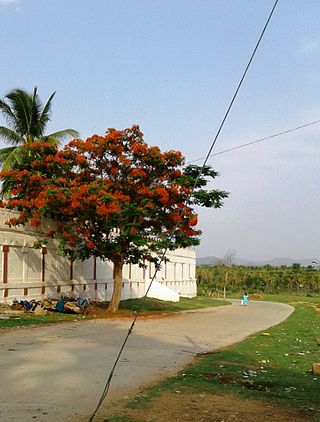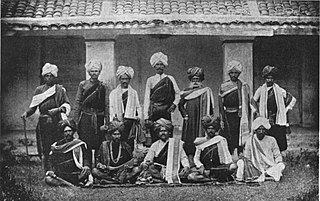
Mysore, officially Mysuru, is the second-most populous city in the southern Indian state of Karnataka. It is the headquarters of Mysore district and Mysore division. As the traditional seat of the Wadiyar dynasty, the city functioned as the capital of the Kingdom of Mysore for almost six centuries. Known for its heritage structures, palaces, and its culture, Mysore has been called the "City of Palaces", the "Heritage City", and the "Cultural Capital of Karnataka". It is one of the cleanest cities in India according to the Swachh Survekshan.

The Kingdom of Mysore was a realm in the southern part of Deccan Plateau traditionally believed to have been founded in 1399 by two Hindu brothers, in the vicinity of the modern city of Mysore. From 1799 until 1950, it was a princely state, until 1947 in a subsidiary alliance with British India. The British took direct control over the princely state in 1831. Upon accession to the Dominion of India, it became Mysore State, later uniting with other Kannada speaking regions to form the state of Karnataka, with its ruler remaining as Rajapramukh until 1956, when he became the first governor of the reformed state.

Chamarajendra Wadiyar X was the twenty-third Maharaja of Mysore between 1868 and 1894.

Bangaarada Manushya is a 1972 Indian Kannada language film based on T. K. Rama Rao's novel of same name. Ramarao was known for his crime and detective novels, but this film was a social drama. It was directed by S. Siddalingaiah under the banner Srinidhi Productions. Prior to this, Siddalingaiah had worked with Rajkumar in Mayor Muthanna. It stars Rajkumar and Bharathi. The film was screened for over two years at the States Theatre in Bangalore and was screened for sixty weeks in Chamundeshwari theatre in Mysore, the film Completed one year in many centres and twenty five weeks in every major and minor centre. The movie saw a 25 weeks run when it was re-released in 1988.

Bangalore is the capital city of the state of Karnataka. Bangalore, as a city, was founded by Kempe Gowda I, who built a mud fort at the site in 1537. But the earliest evidence for the existence of a place called Bangalore dates back to c. 890.

Arsikere is a city and taluka in the Hassan district in the state of Karnataka, India. It is the second largest city in Hassan district, demographically. Arsikere city municipal council consists of 35 wards. This region is known for its coconut production and is also called Kalpataru Nadu. Arsikere Junction is a major railway junction in the South Western Railway which links Mangalore and Mysore to North Karnataka and a central place for tourists who visit nearby places that do not have rail access, such as Belur, Halebidu and Shravanabelagola, Harnahalli, and Kodimata.

Vokkaliga is a community of closely related castes, from the Indian states of Karnataka and Tamil Nadu.

The Unification of Karnataka or Karnataka Ekikarana refers to the formation of the Indian state of Karnataka in 1956 when several Indian states were created by redrawing borders based on linguistic demographics. Decades earlier during British rule, the demand for a state based on Kannada demographics had been made.
Kanteerava Studios was planned and allotted for the development of Kannada Films.
The Kingdom of Mysore was a kingdom in southern India traditionally believed to have been founded in 1399 in the region of the city of Mysore in Karnataka. For the most part, the Wodeyar dynasty ruled the southern Karnataka region until the kingdom united with the Dominion of India in 1947. During the kingdom's history, it went through various phases of administration, with increasing foreign influence from the eighteenth century.
The Kingdom of Mysore was a kingdom in southern India founded in 1399 by Yaduraya in the region of the modern city of Mysore, the Karnataka state. The Wodeyar dynasty ruled the Southern Karnataka region until Indian independence in 1947, when the kingdom was merged with the Union of India.
S. A. Chinne Gowda is an Indian film producer and distributor of Kannada films.

Ranadheera Kanteerava is a 1960 Indian Kannada-language historical drama biographical film directed by the editor-turned-director N. C. Rajan and written by G. V. Iyer. It is one of the most popular films of acclaimed Kannada actor Rajkumar, who plays the role of an emperor Kanthirava Narasaraja I of the Wodeyar dynasty, Mysore, who was fondly named as Ranadheera Kantheerava. The film depicts the life of Kanteerava, who is known for his immense physical strength through wrestling. The film was credited to be one of the most authentic historical films made since it was entirely based on the documents found in the Mysore Palace. The film also stars Udaykumar, Leelavathi, K. S. Ashwath and Sandhya Shantaram in prominent roles.

Rana Vikrama is a 2015 Indian Kannada-language action thriller film written and directed by Pavan Wadeyar. It stars Puneeth Rajkumar, Anjali, Adah Sharma, Dinesh Mangalore, Vikram Singh, Girish Karnad, Avinash, Sudha Belawadi and Mukhyamantri Chandru. The soundtrack of the film was released on 21 March 2015.
Gurudevarahalli Madegowda popularly known as G. Made Gowda was an Indian freedom fighter, politician and also an activist. He was former Member of Parliament and a Cabinet Minister in the state of Karnataka.

Moily ministry was the Council of Ministers in Karnataka, a state in South India headed by M. Veerappa Moily that was formed after S. Bangarappa submitted resignation.











